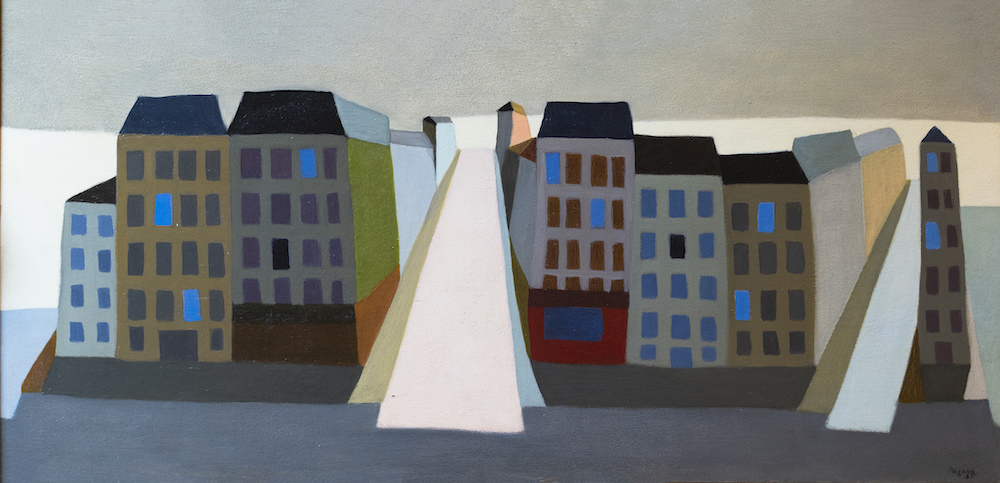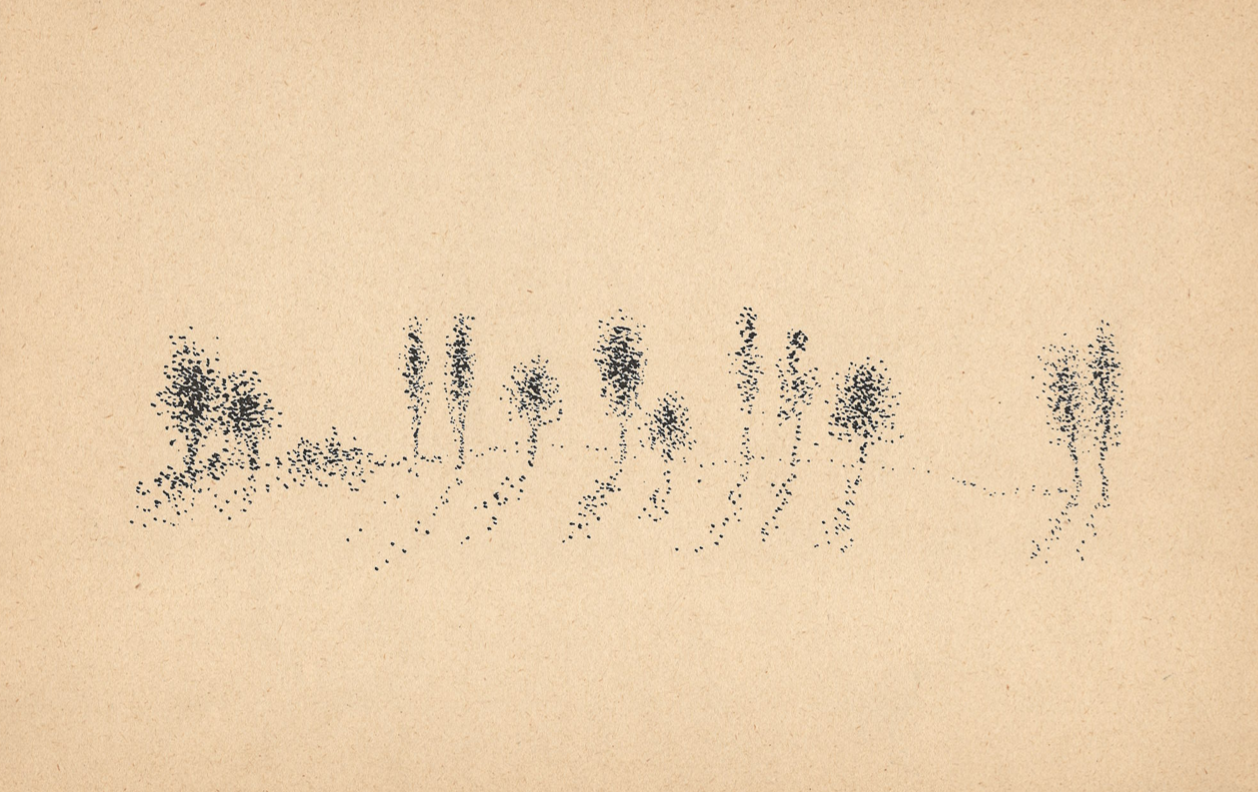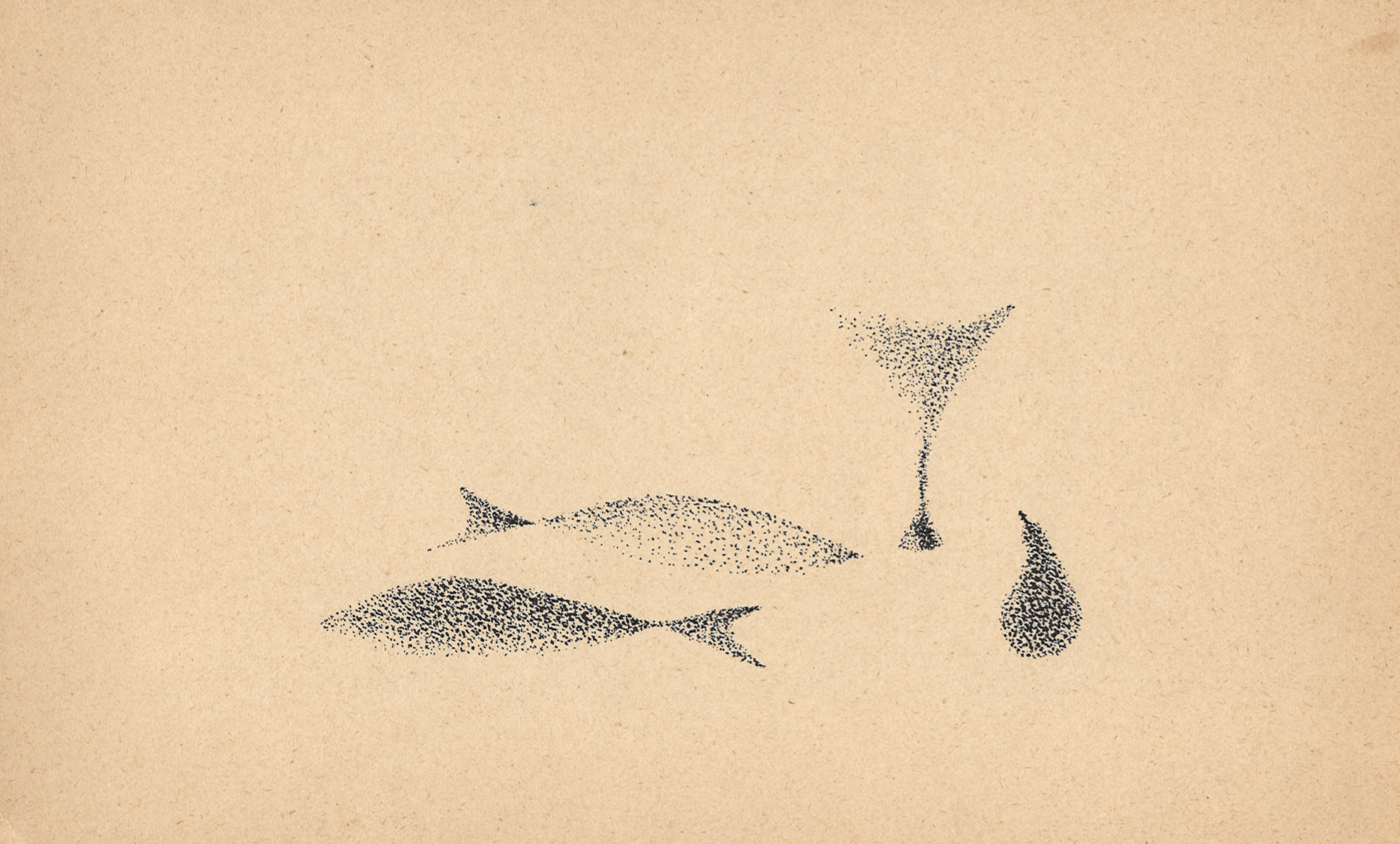
Feel free to add tags, names, dates or anything you are looking for


At the end of the 50s/beginning of the 60s Vera Pagava created a unique graphic style, which she mostly employed for plein-air landscape paintings and occasionally for the production of still lifes.

Vera Pagava. Ville Provinciale. 33x68. Oil on panel. 1955. This work is part of ATINATI Private Collection
The artist utilized this method to produce dozens of lyrical drawings that capture the fleeting essence of nature. Pagava drew dots and created images on blank pieces of paper using just a pencil (graphite). When combined, these points not only reveal the visual silhouettes of objects, but also the surrounding atmosphere, the light, and even the "movement" of nature by means of this straightforward technique. Her artworks are dynamic: they convey to us the artist's hand movements, the sound of grass swishing and leaves rustling, the motion of trees in a breeze, and the inpouring of light into the surrounding space. The artist expresses her personal, lyrical viewpoint regarding the outside world using readily available materials (paper and pencil), and a seemingly straightforward yet challenging approach.

Vera Pagava. Pencil on paper, 17.5x27. 1965
In 1965, a facsimile album of Vera Pagava's pointillist series was published in conjunction with her personal exhibition. This limited edition publication, which comprised just 250 copies, included drawings from the artist's travel book.
With regard to Pagava, we use pointillism as a term that denotes her “dotting” technique, and we do not directly refer to the post-impressionist trend known by this name. Her unique approach was the use of dots to produce black-and-white graphics rather than colorful visuals.
In sketches that are transparent as lace, regardless of the frequency of points or their scarcity, a form is created, a volume is defined, and an entire image is shaped. There are no contours drawn here; neither are the main features highlighted, nor the outline of the images provided. Matte and dark, round and stippled dots convey the mood of the environment, the season of the year and the time of day. The dots produce a play of light and shade, and often the effect of painting is achieved. We can even feel the colors, as if color enters the picture with a temporary cinematic effect, and then immediately gives way to black and white.

Vera Pagava. Pencil on paper, 17.5x27. 1965
Trees with their shadows, castle ruins in the lap of nature, low hills, bushes swaying in the breeze... Vera Pagava shares her poetic attitude toward the visible world. Through these sketches, she enables us to feel nature’s combination of the transient and the timeless. This seemingly simple technique demands from her hand such extreme precision that not a single point is permitted to disrupt the artistic integrity. Notwithstanding the number of dots, each one of them is visible since it is marked on a white sheet of paper. However, they (the dots) interact and produce subtle nuances - sometimes they transmit light, sometimes they become shadows; sometimes they build a wall, and sometimes they reveal a path…

Vera Pagava. Pencil on paper, 17.5x27. 1965
In Pagava's album, the French journalist and collector Pierre Granville interpreted these beautiful drawings with poetic language. As he proclaimed, Pagava possessed the knowledge of “small black dots,” and he called her “a tireless embroiderer.” As Granville wrote: “Our steps zigzag along the fences, and we emerge at the bend of a hill, in a valley that is overlooked by a hamlet: a belfry bell tower pierces the blue air and the autumnal haze. Thus, since the beginning of our wanderings through France, we have crossed many regions, Burgundy and Dordogne, Vendée, Berry and Senones, and here is Gâtinais. Could this be Yèvres, whose church spire we can discern? If not yet so, it is the warm scent of a brotherly region that will welcome us, and this can only be a French village whose glimmering weathercock is this invisible white spot above the black dot of the bell tower spire," (Vera Pagava: Dessins extraits de carnets de route édités à l’occasion de la présentation de ses œuvres. “Sous les toits de Paris:” Mai-Juin 1965: 14).
Employing the artistic approach (airiness) of a white background, undefined perspective, simplicity and brevity, Vera Pagava’s graphic series resembles Chinese-Japanese graphics. Most importantly, this proximity can be apprehended in the abstractness of the images, in their sublime poetics. However, with its particular treatment of light and new ways of reflecting it, Pagava's oeuvre is an integral part of French art.

Vera Pagava. Pencil on paper, 17.5x27. 1965
As far as still lives are concerned, with her "transparent" technique Vera Pagava dematerializes objects on paper. She removes the existential reality from a fish, or a pear, a glass, a watering can or any other object, and fills it with the same warmth as she herself felt within each of them. Most importantly, the artist imbues them with the light that she strongly perceived. In order to express her viewpoint, she would employ any artistic method – pictorial, or in this case, graphic.
Illustrations: the sheets from the catalogue Vera Pagava: Dessins extraits de carnets de route édités à l’occasion de la présentation de ses œuvres. “Sous les toits de Paris:” Mai-Juin 1965. Exemplaire #101. Property of Simon Kintsurashvili.